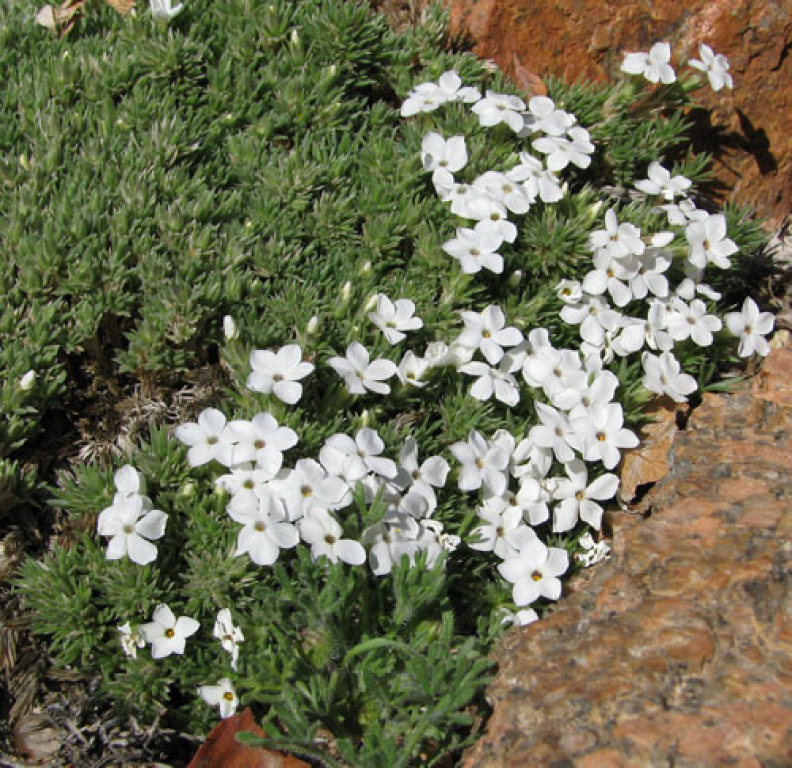Phlox condensata forms a dense cushion of evergreen foliage. Numerous, nearly stemless white to pale mauve flowers are produced individually or in pairs. In the wild, it occurs on high mountain slopes, screes, fell-fields and rocky ledges, generally on limestone substrates. Elevations range from 6100-14,000 feet depending on the mountain range it inhabits. While frozen for many months, the strong winds of their natural haunts prevent the accumulation of much snow. Essentially, it grows in very xeric alpine environments.
This species has two distinct populations which overlap the distribution of bristlecone pine,Pinus aristata. The subspecies condensata is found in Colorado and New Mexico while the subspecies covillei is found in California and Nevada. The minute leaves are linear, almost needle-like and sparsely hairy on the subspecies condensata while more elliptical and densely hairy on the subspecies covillei. Those with lavender-colored flowers are generally restricted to the subspecies covillei.
Plant Of The Month For June 2013: Phlox condensata

Other plants of the month
-
Jan, 2026 Astragalus chamaeleuce
-
Dec, 2025 Tulipa linifolia
-
Nov, 2025 Primula bulleyana
-
Oct, 2025 Picea pungens 'St. Mary's Broom'
-
Sep, 2025 Androsace sarmentosa
-
Aug, 2025 Gentiana cachemerica
-
Jul, 2025 Minuartia laricifolia
-
Jun, 2025 Onosma cinerea
-
May, 2025 Trillium luteum
-
Apr, 2025 Narcissus bulbocodium
-
Mar, 2025 Peltoboykinia watanabei
-
Feb, 2025 Saxifraga federici-augusti
- 1 of 17
- next ›
Description and General Information:
